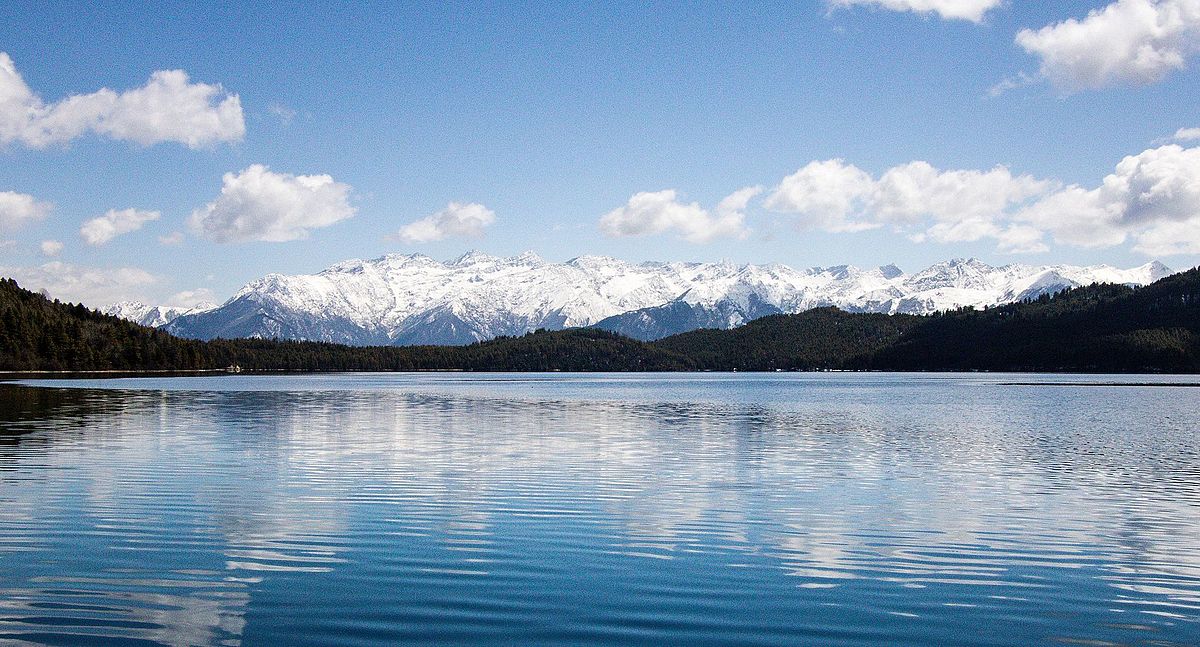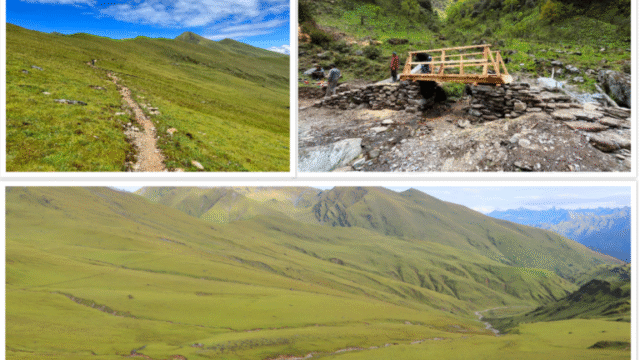Rara Lake, nestled in the remote Mugu district of Nepal, stands as the country’s largest freshwater lake and a hidden treasure for tourists seeking unparalleled natural beauty. This magnificent lake, located within Rara National Park at an altitude of 2,990 meters, offers a serene escape surrounded by lush forests, snow-capped peaks, and diverse wildlife, making it a prime destination for nature lovers, trekkers, and adventurers alike.
Spanning an area of 10.8 square kilometers with a depth of up to 167 meters, Rara Lake is renowned for its crystal-clear blue waters that reflect the stunning landscape, creating a mesmerizing mirror-like effect. The lake is a paradise for photographers and travelers, offering breathtaking views during both sunrise and sunset. The lake’s beauty is enhanced by the pristine wilderness of Rara National Park, which is home to a variety of flora and fauna, including Himalayan black bears, musk deer, and red pandas.
Reaching Rara Lake itself is an adventure, making it a highly sought-after trekking destination. The Rara Lake Trek, starting from Jumla or Talcha, offers trekkers a challenging yet rewarding experience through rugged trails, remote villages, and diverse landscapes. The trek takes approximately 8-10 days and introduces visitors to the unique culture of the indigenous Thakuri and Raji communities, allowing for a cultural immersion along with the scenic adventure.
For those less inclined to trekking, flights to Talcha Airport, located just a few hours’ walk from the lake, offer a quicker route to this hidden gem. This accessibility has opened up Rara Lake as a destination for all types of travelers, from serious adventurers to those seeking a peaceful nature retreat.
In recent years, Rara Lake has been steadily gaining attention as a must-visit destination in Nepal’s tourism sector. To support this growth, the government and local communities have been working on sustainable tourism practices. Several eco-friendly accommodations have sprung up around the lake, ensuring that tourism development aligns with the conservation of the natural environment. Visitors can now stay in comfortable lodges and homestays while experiencing the local hospitality.
Despite its growing popularity, Rara Lake remains relatively untouched compared to more commercialized destinations like Pokhara or Annapurna. The pristine environment and tranquility make it an ideal destination for those seeking solace in nature. Efforts are being made to promote Rara Lake as a sustainable tourism destination, balancing the influx of tourists with the need to preserve its fragile ecosystem.
The best time to visit Rara Lake is during the spring (March to May) and autumn (September to November) when the weather is mild, and the views are clear. During these seasons, the surrounding forests are alive with blooming wildflowers and vibrant greenery, creating a perfect backdrop for the lake’s sparkling waters. Winter (December to February) can be cold and snowy, adding to the lake’s beauty but making access more challenging.
Tourism has brought positive economic changes to the local communities around Rara Lake. Many locals are now involved in providing services such as guiding, accommodation, and transportation, allowing them to benefit directly from the influx of visitors. Cultural exchanges between tourists and the indigenous communities have also helped in preserving the unique traditions of the region while promoting cross-cultural understanding.
While the growth in tourism presents opportunities, it also poses challenges. The remote location and lack of developed infrastructure, such as proper roads and health services, remain significant barriers. However, ongoing efforts by the government and private sector aim to improve accessibility while preserving the region’s natural beauty. The promotion of eco-tourism, responsible travel, and infrastructure improvements will be key to ensuring that Rara Lake remains a sustainable and thriving tourist destination.
Rara Lake is undoubtedly one of Nepal’s most captivating natural attractions, offering a combination of serene beauty, adventure, and cultural richness. As tourism continues to develop in this region, it is essential to focus on sustainable practices to ensure that future generations can also experience the untouched beauty of this Himalayan jewel. Whether you are a trekker, nature enthusiast, or someone seeking peace, Rara Lake promises an unforgettable journey into the heart of Nepal’s wilderness.






